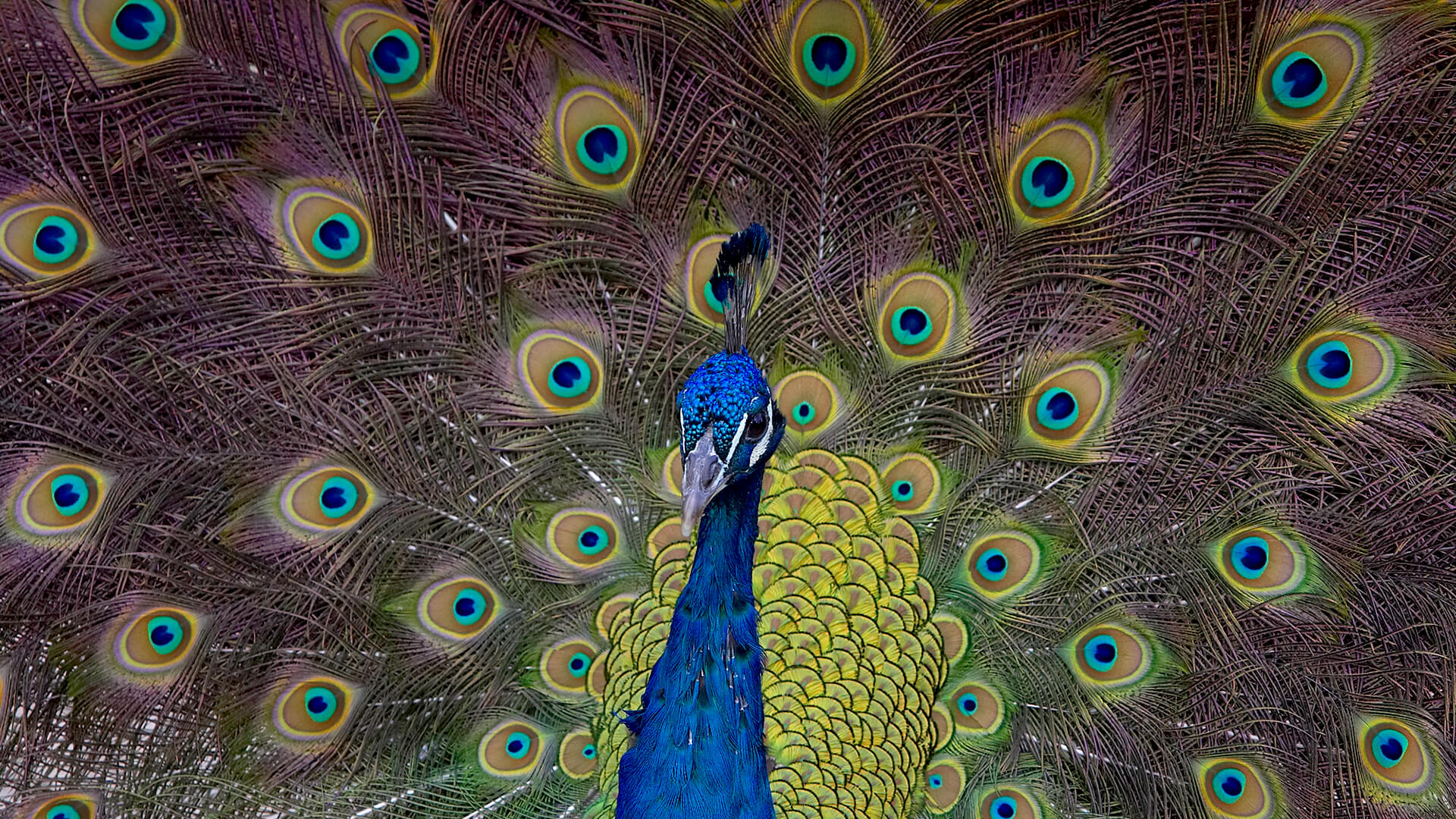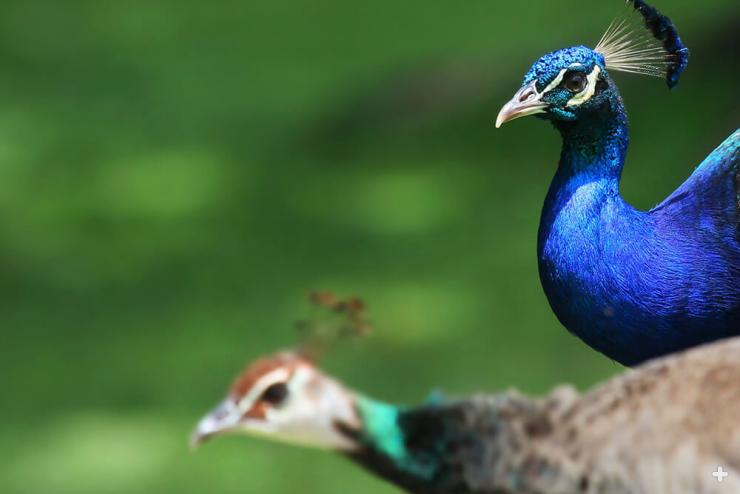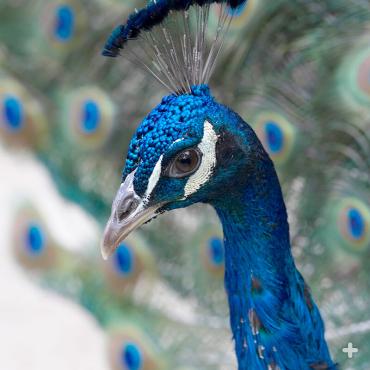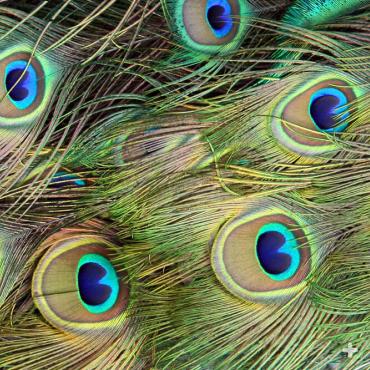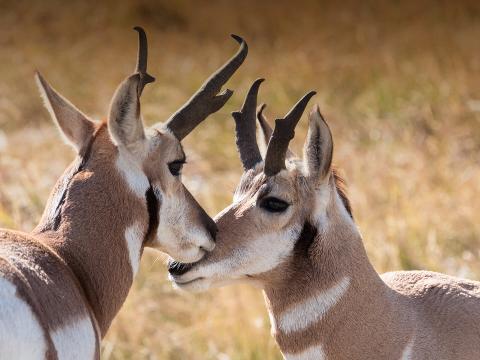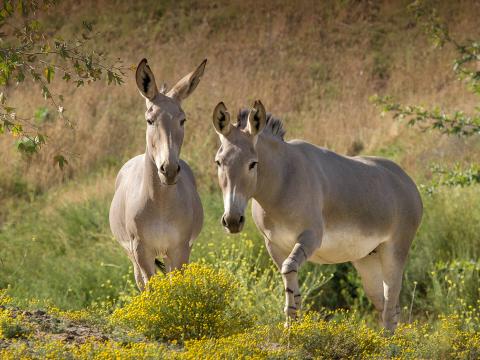Peafowl
- CLASS: Aves (Birds)
- ORDER: Galliformes
- FAMILY: Phasianidae
- GENUS: Pavo
- SPECIES: crisatus (Indian or blue peafowl); muticus (green peafowl)
ABOUT
Peacocks and peahens—these are the birds known as peafowl, members of the pheasant family. Although most people call them all "peacocks," the word really only refers to the male bird. Just like among chickens, where the male is called a rooster or cock and the female is called a hen, male peafowl are peacocks, female peafowl are peahens, and babies are peachicks! There are two peafowl species: Indian or blue peafowl and green peafowl. Most people are familiar with the Indian peafowl, since that is the kind found in many zoos and parks.
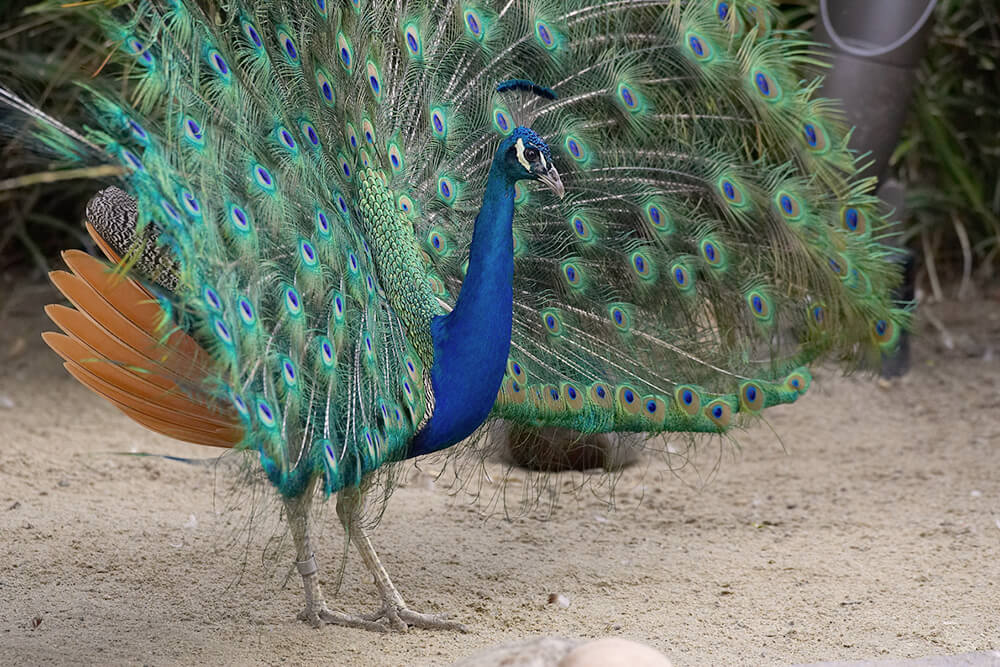
The peacock has some of the brightest feathers and one of the most impressive courting displays of any bird in the world. The Indian peacock has very flashy plumage, with a bright blue head and neck, but the Indian peahen is a drab, mottled brown in comparison. The male needs his bright feathers to attract a mate, and the female needs to be able to blend in with the bushes so that predators cannot see her while she is incubating her eggs.
Unlike the Indian peafowl, the male and female green peafowl have similar coloration, although the peahen's colors are not as vibrant as the peacock's, and the male has a much longer tail. Green peafowl have green, rather than blue, feathers on the head and neck. Both Indian and green peafowl have bare patches of skin around their eyes and a funny crest on the top of their head made of feathers arranged in a fan shape. The Indian peafowl’s crest looks like little dots on the end of sticks!
The peacock’s back and belly have iridescent feathers in a scale pattern. But the thing that the Indian and green peacocks are best known for is—not the tail! These peacocks have a long “train,” which most people think is their tail. Actually, those long feathers are the male's tail coverts, or the feathers that cover the base of the tail. The train is covered in ocelli, which are round spots that look a lot like shining eyes.
It may seem that having such a long train and bright feathers would slow a peacock down and make him an easy target for predators like mongooses, jungle cats, stray dogs, leopards, and tigers—and this is absolutely true! However, if a predator grabs the train, the long feathers pull out easily, and the peacock can fly away.
When a peacock is in his second year, he grows his first train, but it has no ocelli and is not as long as a full-grown male’s. The train gets longer and more elaborate every year after that. At about five or six years of age, it reaches its maximum splendor. The peacocks that are the toughest—those that are able to survive long enough to have a really impressive train—are the ones that have the most mates and offspring. The coveted blue-eyed feathers of the train are dropped once a year; new feathers immediately begin growing and are completed a few months later.
Peahens seem to prefer males with the longest trains and biggest displays. In fact, the peacock’s female-attraction power is directly related to the perfection of his spectacular train, including its overall length, the number of iridescent “eyes” that are present, and even the symmetry of their patterning. It was the peacock’s train that apparently set Charles Darwin to thinking about the workings of how a special kind of natural selection he called “sexual selection” might operate and how a sense of esthetic beauty might have evolved, among birds AND humans.
A legend says that the peacock’s Creator gave it a horrible voice, lest its beauty make the bird overly conceited. Peafowl have 11 different calls, but the peacocks are the ones that really yell. They have a call that carries for a long distance and sounds like “may-AWE, may-AWE.” Some say the call sounds like a human crying for help! Peacocks call in the early morning and late evening, and practically all day during the breeding season.
In the past, wealthy people brought peafowl to their estates to strut about the grounds and look pretty. Then the peafowl reproduced and spread out into the surrounding areas. This caused problems in some places, because the peacocks made so much noise in the early morning that they became a real nuisance! With their sharp eyes, peafowl are likely to be the first to see a predator and call out a loud alarm, which conveniently alerts other wildlife in the area.
HABITAT AND DIET
Indian peafowl have a range that includes India, Pakistan, and Sri Lanka; while green peafowl are found in Southeast Asia. However, both species follow a certain routine every day. They roost overnight in large groups in tall, open trees. That way they are safe from predators during the night, and the males can travel through the branches.
In the morning, they break up into small groups. In the nonbreeding season, these are usually groups of all peacocks or all peahens; but during the breeding season, there are harem groups of one peacock and several peahens or all bachelors. These groups forage on the ground for food. During midday, peafowl drink, preen their feathers, and rest in the shade. Once it cools down, they go back to foraging for food before taking one last drink and returning to their roost for the night.
A group of peafowl forages on the ground each day for grain, insects, small reptiles and mammals, berries, figs, leaves, seeds, and flower parts.
Peafowl at zoos are fed commercial pheasant pellets, chopped greens, and chopped fruit.
FAMILY LIFE
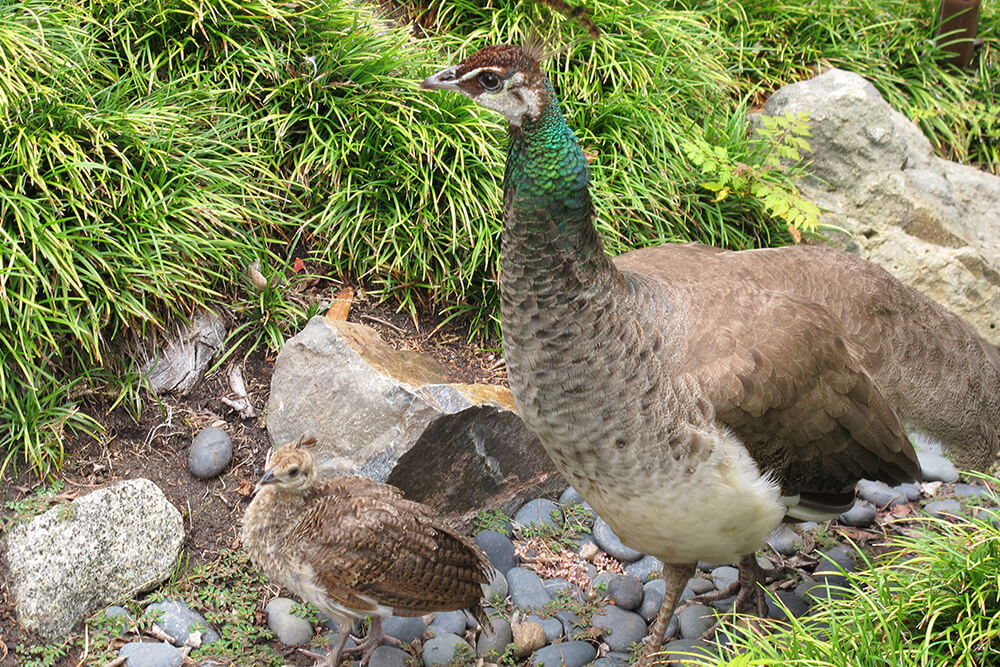
Normally, when a peacock is just walking around, his train trails behind him but held just above the ground. But when he wants to show off for a peahen, he props up the train with his shorter, stiffer tail feathers and unfolds it like a fan into a semicircle 6 to 7 feet (1.8 to 2.1 meters) wide! If the peahen seems interested, he quivers, making his feathers shimmy and flash to entice her further.
The peacock maintains a small territory and chooses a part of it for a lek. Breeding season starts with the monsoon rains. Because the peacock struts around and shows off, humans think that he looks very proud of himself. Hence the expression “proud as a peacock”!
She may not look as impressive, but the peahen has a big job: raising her chicks all by herself! The peahen makes a scrape in the ground and lines it with sticks, where she lays three to eight light green or tan eggs. She sits on them almost constantly for about four weeks. The peachicks are able to walk and forage on their own right after they hatch, but they are very vulnerable. It takes two weeks before they can flap up into a tree for safety, where they crowd on both sides of their mother and are covered by her wings.
At four weeks, the young grow crests, and at two months they look just like their mother (both males and females) but are only half her size. It is not until their second year that the males achieve their mature coloring. Out of every six chicks that hatch, usually only two survive to join the rest of the group.
CONSERVATION
Green peafowl populations have been declining rapidly, as the birds are hunted for their meat and the male’s spectacular feathers. Some people take peafowl eggs, chicks, and adults from their native habitats, to be sold as pets. Loss of habitat doesn’t help them, either, and farmers in China and Thailand who consider the birds pests poison the peafowl that come on their land. Now protected by law in China, public awareness campaigns are underway to help these endangered, beautiful birds.
By supporting San Diego Zoo Wildlife Alliance, you are our ally in saving and protecting wildlife worldwide.

